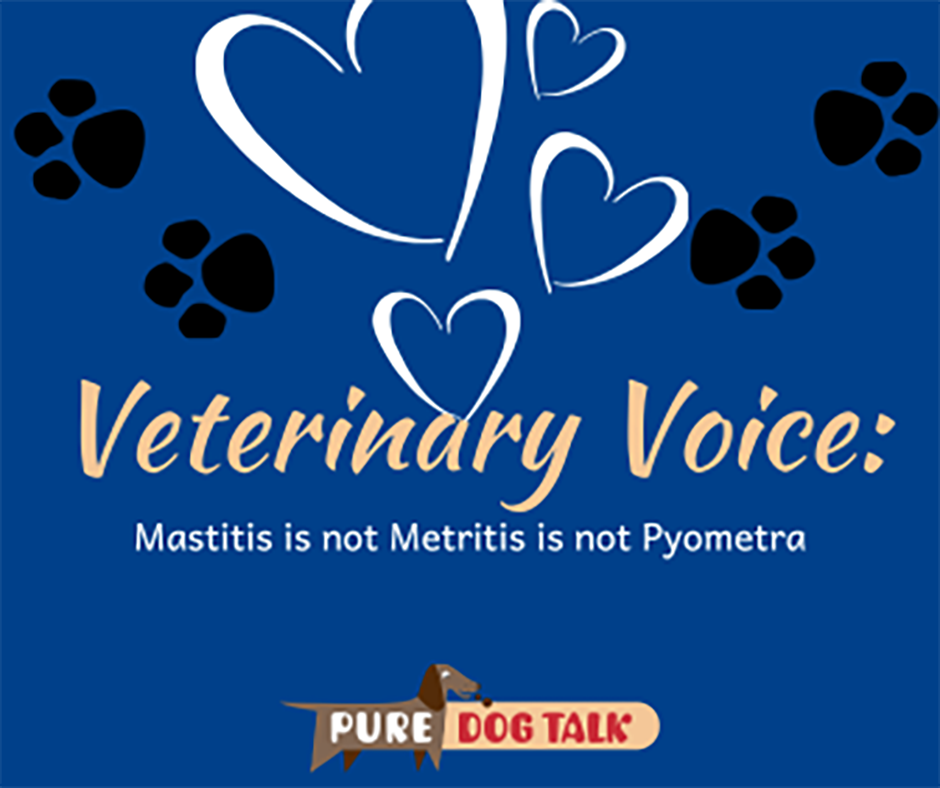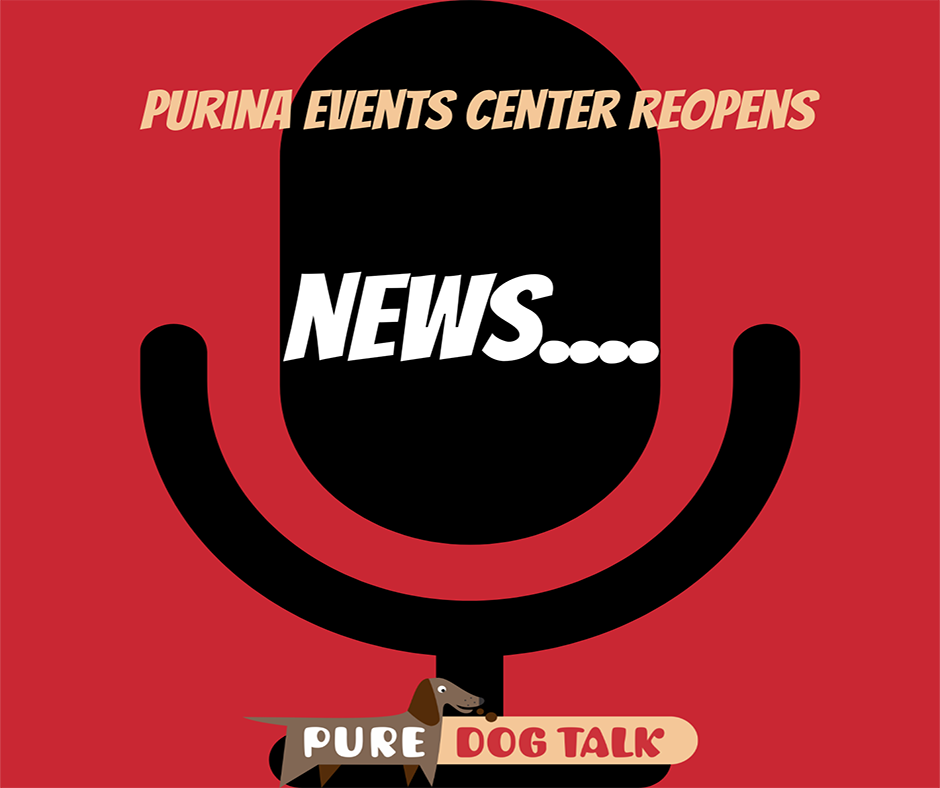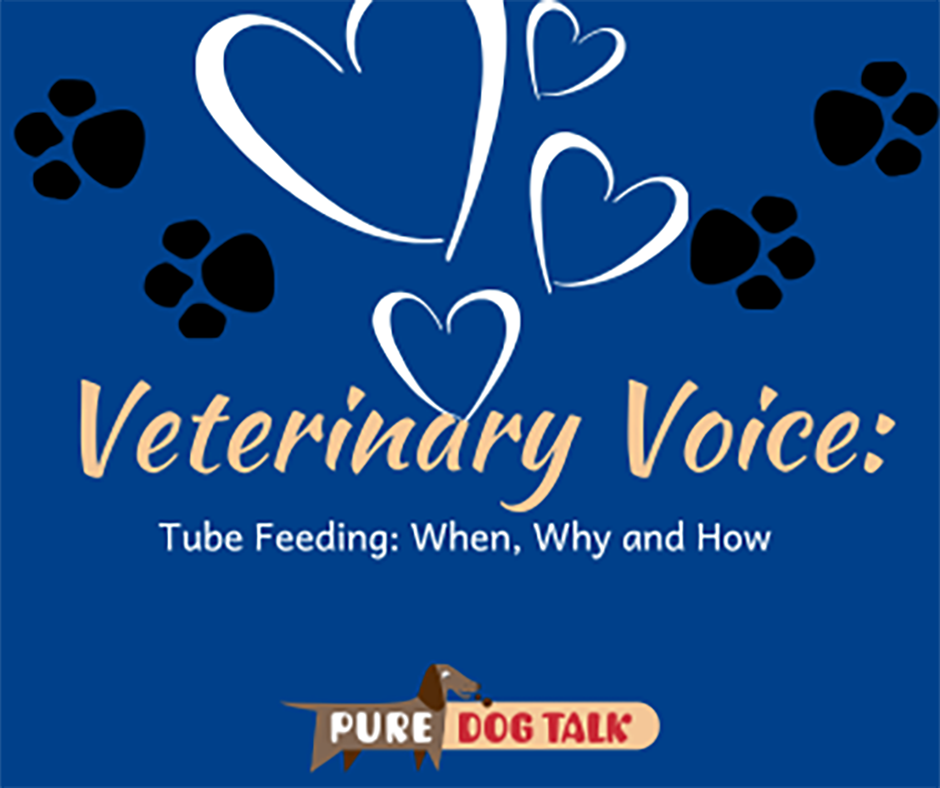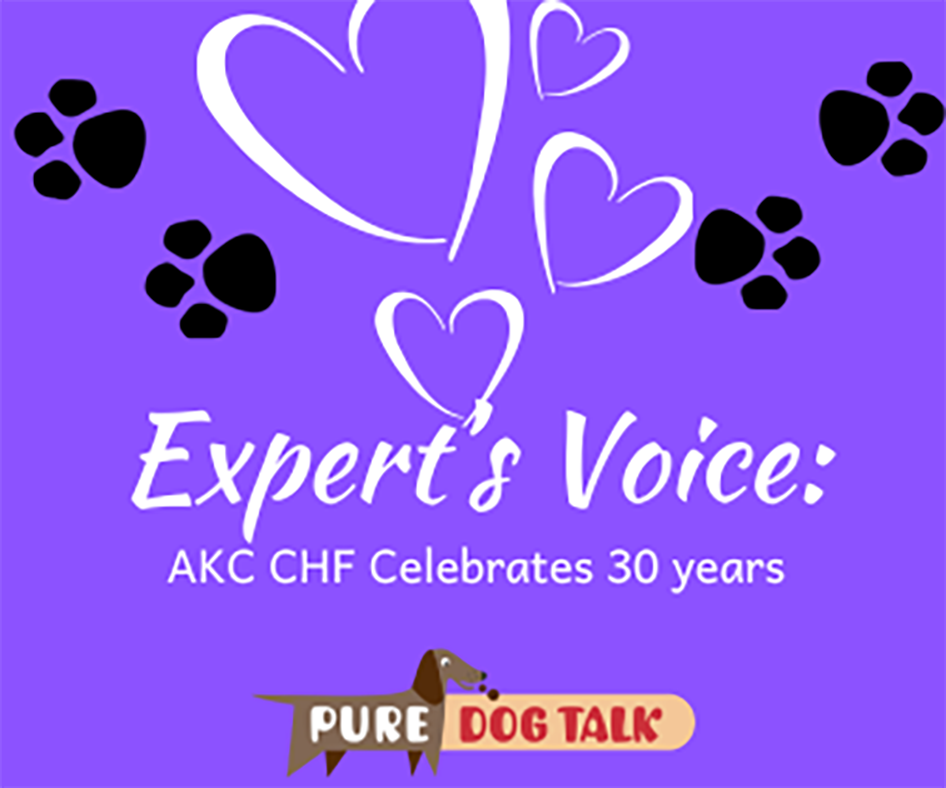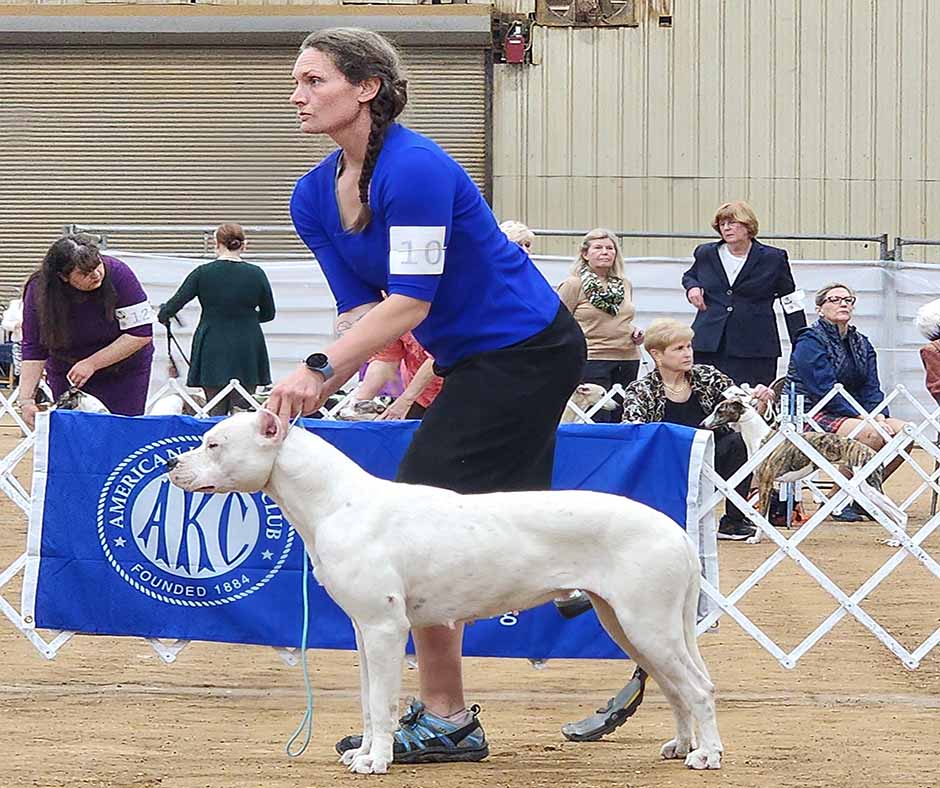Posts by Laura Reeves
686 – How to Battle Anti Breeder Legislation Around the US
How to Battle Anti Breeder Legislation Around the US
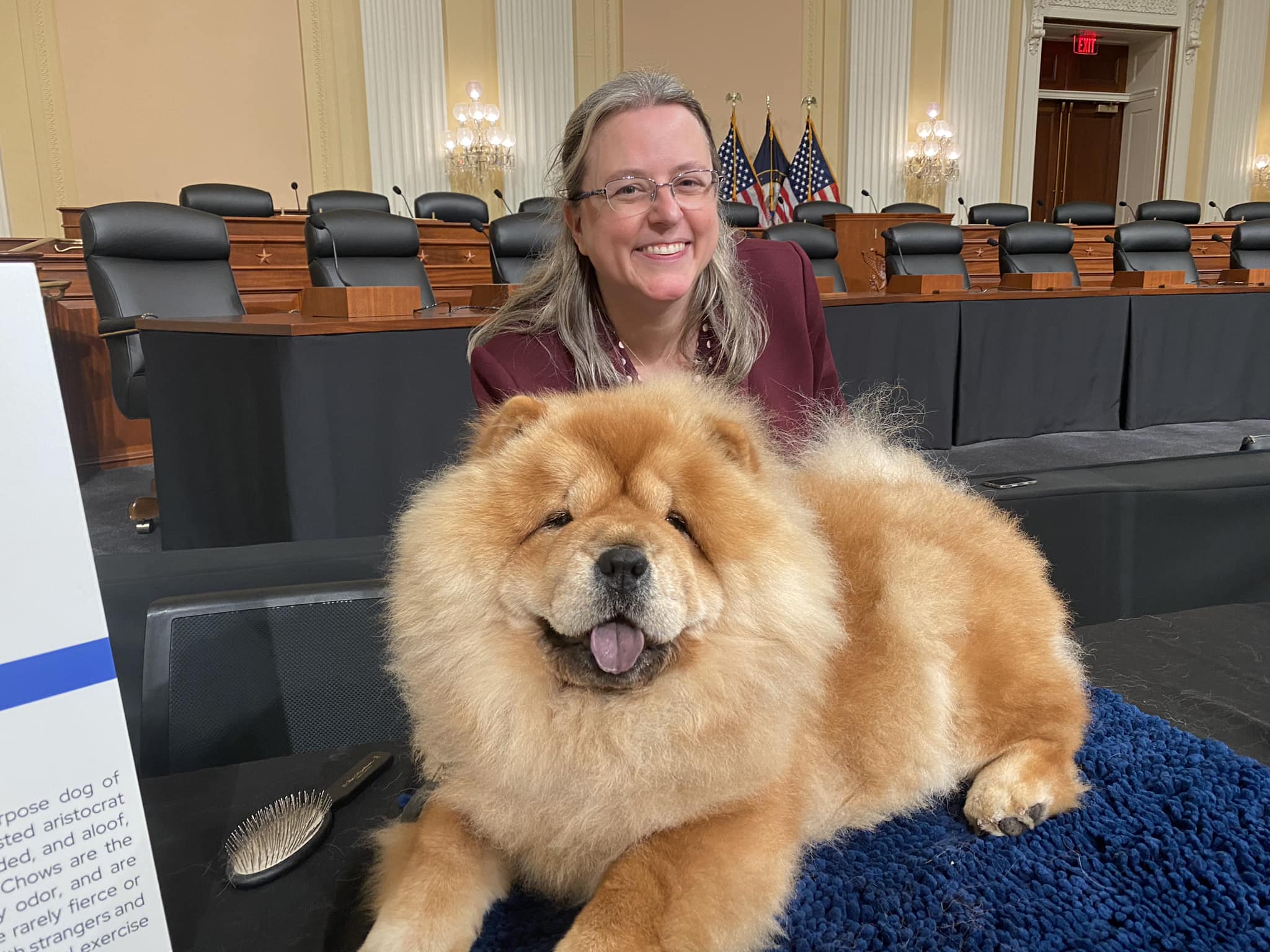
Jennifer Clark joins fanciers at an event in Washington DC.
Host Laura Reeves is joined by Jennifer Clark, AKC director of legislative outreach, to talk about legislation in Oregon and what’s happening elsewhere in the country and why it matters that fanciers get involved.
“For those who are not in Oregon, or may not have been following it,” Clark said, “what this bill basically said initially is that the state has to start regulating anyone who breeds and sells in the state. So if you sell one dog, you suddenly have to be regulated. We don’t have any idea what these regulations are going to be.
“That was a huge concern for us because why should someone who’s breeding and raising one litter in their home be regulated and inspected by the state? A lot of times in states when they’re regulating breeders, it’s on a commercial level. They’re regulating the large commercial facilities or people who are doing this professionally and not those who are hobbyists or financiers.
“And there are very specific guidelines that are often in place, such as drainage in your floors and kennel setups and temperature records. All these things like flooring are great if you have a large kennel building, but what if that’s your living room? Then how are you going to be able to comply? Does that mean I have to tear up my carpet because it can’t be completely sanitized? Do I have to put a drainage system in my laundry room? And does that mean that state has to come in and inspect my kitchen because that’s where the whelping pen is. How do we handle these questions? So that was a huge concern.
AKC Government Relations, NAIA, local clubs and fancier reaction resulted in an amendment to state ‘more than two litters,’ Clark added and the bill is currently not passed into law. You can track legislation in your state with AKCGR’s fantastic tool HERE.
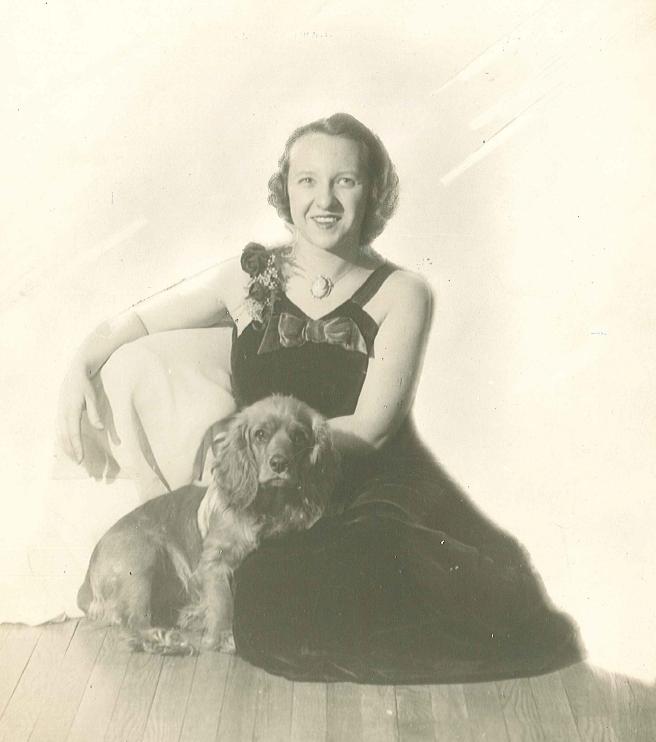
Clark’s grandmother with her show bred Cocker Spaniel circa 1930s,
“(Legislators) need to understand this group of people and who you are and what you do. And that is what’s going to make the difference to them because you are the ones that are going to be directly impacted. You are the ones who are going to vote, and that’s why they need to hear from you. And that’s why we’ve seen any change on this bill at all. And that’s why it’s slowed down a bit is because of everyone who has written in and called. And we hope that you’ll continue to do so,” Clark said.
AKCGR is holding a legislative conference to help people learn how to interact on this type of legislation. The conference is scheduled in St. Louis on Saturday, June 14.
“We will give updates on legislation around the country, provide fun, interactive sessions on how to be effective advocates for your dogs and our sport, and discuss how clubs can make a difference in their community,” Clark noted.
For more information and to register, visit www.akcgr.org/midwestconference2025
685 – Mastitis is not Metritis is not Pyometra
Mastitis is not Metritis is not Pyometra
Dr. Marty Greer joins host Laura Reeves to walk through the differentials in diagnosing possible infections in the breeding bitch, including mastitis, metritis and pyometra.
“There’s a lot of reasons that postpartum bitches can run a fever. So I think it’s a really good topic because when you go to the vet or if you know if you’re calling for a vet appointment or you’re getting to the vet, it can be a little more muddy than you think it should be.
“Before you call your vet with a sick postpartum bitch, take her temperature. Please take her temperature because the second thing the receptionist is going to ask you is what’s her temperature? And you’ll be like, I don’t know, I can’t find my thermometer. So have a thermometer dedicated to the dog, have a jar of Vaseline, and be sure that you’ve taken it and written it down. Because by the time your postpartum bitch is sick, you are stressed, you are tired, and you can barely remember your own name. So write down the stuff.
“How are the puppies doing? Are they gaining weight? Losing weight? Are they sick? Because there is a big difference. Both metritis and mastitis can cause the puppies to be sick as well. Because the bitch is sick. So mastitis is inflammation and infection of the mammary glands, and metritis is inflammation and infection of the uterus to be differentiated from pyometra.
“The top two differentials are always going to be metritis: infection of the uterus, inflammation of the uterus, and mastitis: infection, inflammation of the mammary glands. Now, just because the mammary glands are firm does not mean the bitch has mastitis. And just because the mammary glands are firm does not mean you automatically slam her on antibiotics.”
Marty continues with a complete discussion of metritis (within 24-48 hours of whelping), mastitis (not exclusively, but commonly 3-4 weeks post whelping) and pyometra which generally occurs when a bitch is not in whelp and normally is not accompanied by a fever.
Remember, if you enjoy our conversations, check out our new show! Recorded for you, your puppy buyers, your non-doggy friends and your cousin’s uncle’s girlfriend, the show is designed to reach the general pet owning public with reliable accurate information in an accessible format.
684 – Purina Events Center Reopens
Purina Events Center Reopens
Host Laura Reeves is joined by Angie Minges, Director of partnership marketing and events for Purina to discuss the rapid response that reopened the Purina Event Center in time for PCA.
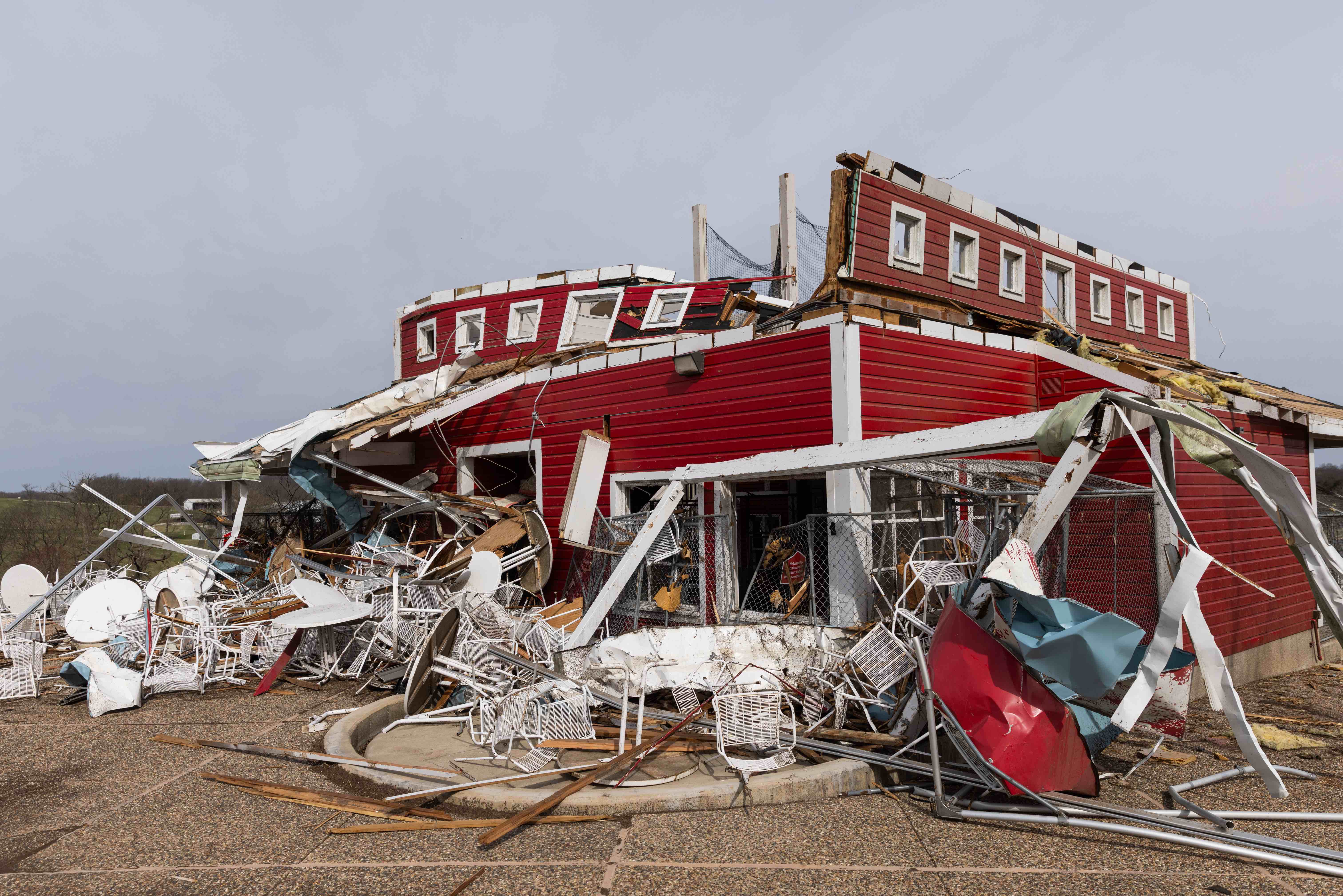
Tornado damage at Purina Farms has closed the Visitor Center, but the Events Center is open for business.
The Purina Farm and Events Center outside St. Louis, MO was hit by an EF2 tornado on March 14. The barn and visitor center were badly damaged. The events center and surrounding grounds sustained significant wind damage wiping out trees, light poles and more.
“What was hit the hardest on our property besides the lovely trees and just the fields themselves were our barn and our visitor center, so both of those two buildings will have to be demolished. It’s so sad and the community has been so supportive and loving and caring of our farm and we couldn’t be more thankful for the people that we have in our lives that love Purina Farms. So yes, it was tragic that that natural disaster happened, but it’s also pulled the community together and we’re just so grateful for everyone that is sending their love and care our way.”
While several events were canceled or relocated, the team worked round the clock to have the RV sites and Events Center ready to safely open in time for Poodle Club of America’s National Specialty last week, Minges said.
She added that the Visitor Center will be closed for at least the rest of the year.
“We have the incredible dog arena on Purina Farms and we have a great incredible dog team that does all the fun tricks and the dock diving. We can’t take the dock diving with us, but we’ll take an agility show to some of the festivals and different wine tastings and events that are taking place in the region throughout the summer. Just to stay connected to the consumer and bring the farm to the community.
683 – Own Your Digital Property with an Optimized Website
Own Your Digital Property with an Optimized Website
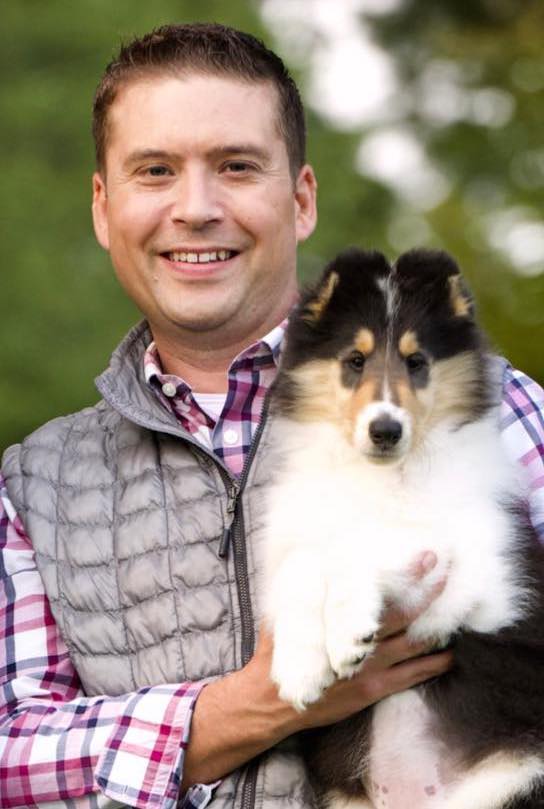
Matt Stelter from Better Breeder Institute with one of his collie puppies.
Matt Stelter from Better Breeder Institute joins host Laura Reeves for a LIVE@5 live podcast about SEO and how to optimize your website.
“Somewhere along the line, conservation dog breeders took on the mindset that they should not be marketing themselves, apparently because it’s just something that for profit or commercial breeders do,” Stelter said. “However, nothing could be further from the truth. It is a limiting belief that harms our conservation breeder community. And puts us at a disadvantage.
“Conservation breeders have failed to make themselves visible. They failed to plant their flag in the ground and they failed to market themselves. Sharing the tremendous value and the story that our purebred dogs possess. We have hid our light under a barrel and given the antis and the doodle mania a free pass to indoctrinate the general public.
“Ask yourself, would you rather rent or own an asset, be it a home, real estate or even a vehicle? When you spend money on paid online advertising or social media, you are investing good money and effort as well on rented digital property and renting is generally a poor long term financial decision.
“If and when you stop paying for it, the traffic stops instantly. My recommendation is that you never spend money on rented digital real estate. Puppy marketplaces, paid online breeder directories, and social media are all rented real estate that you unfortunately. Will never control. The number one strategy to get more and better puppy buyers is an optimized website. A website is owned real estate that appreciates in value and performance over time.
“Facebook has changed dramatically over the past 15 years, and it no longer works the way it used to. All the while, the power of an optimized website has continued to increase. An important fact to realize is that while ideas and inspiration may start on social media, most purchases begin on Google.
“When a prospective puppy buyer starts looking for a breeder, just like with any other important purchase, the grand majority are going to start with a Google search. There’s a famous quote from Jimmy Wales who is the founder of Wikipedia and he said if you are not on Google you don’t exist. And it really is true when it comes to selling puppies.
“It is Google’s world and to be successful, we need to be playing in it. And I can tell you what puppy buyers won’t find at the top of Google your Facebook page. An optimized website is simply the strongest digital asset a breeder can have. It is owned digital real estate that is yours, and its value and performance are going to appreciate over time if managed properly.”
682 – Akitas: Guardian Dogs of the Samurai
Akitas: Guardian Dogs of the Samurai
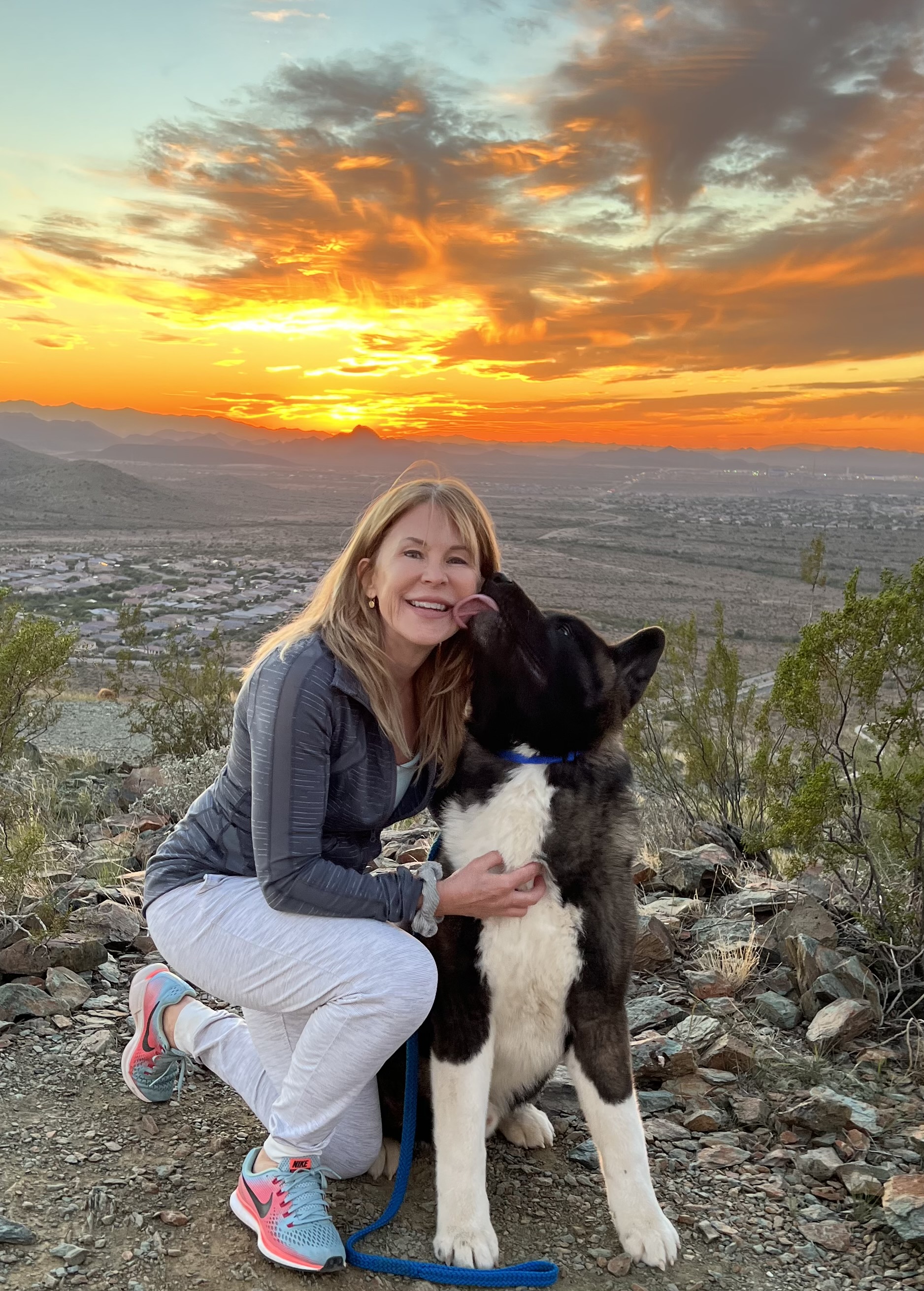
Colleen Sullivan and one of her Sondaisa Akitas.
Colleen Sullivan joins host Laura Reeves for a Love the Breeds episodes on Akitas.
The breed, one of six national monuments in Japan, was introduced to the US by Hellen Keller in 1937. Originally used as guard dogs and companions for the Samurai warriors, the breed is quiet, clean and very devoted to their owners.
Sullivan notes that the breed is best for owners who are willing to be leaders in the relationship and that same sex aggression with other dogs and wariness with strangers is par for the course with the breed.
Sullivan agreed with Laura’s description of the breed as “people with fur” and treating them that way.
“They think too much sometimes,” Sullivan said. “If you hesitate, if you’re not a calm, confident person, yeah, you’re suspicious (to the dog). You’re not gonna walk up to some stranger or allow some stranger to give you a hug and a kiss. You know, you’re just not. It’s like dogs there’s Golden Retrievers the extrovert and then there’s Akita the introvert.
“One of the things we all have in common that have owned an Akita is pride. They’re such magnificent dogs, magnificent beings. They’re like artwork but with power.”
Easy grooming, with the exception of “blowing coat,” and a cat-like insistence on cleanness make the breed easy to live with in Sullivan’s experience.
Training Akitas requires some creativity, Sullivan said, and an ability to make the dog think the work is their idea. Consistency is key to training.
“You can’t let your dog jump all over you one time and then get mad at it the next time,” Sullivan said. “You have to mean what you say.”
Bloat can be an issue with the breed. Sullivan encourages owners to be educated about this disease.
“I hesitate to make this statement, but one of the things that I do because the Akita is such a primitive breed, it’s one of the oldest breeds, is I look at more the wolves and the coyotes and how they exercise and how they eat. All the exercise is done because they’re chasing their prey. Then they’re gorging themselves and they’re getting all these bodily fluids and all of that, and then they rest. So all my (dogs’) exercise is before eating, they get lots of fluid on their food when they’re eating. And then rest.”
681 – Tube Feeding: When, Why and How with Dr. Marty Greer
Tube Feeding: When, Why and How with Dr. Marty Greer
Dr. Marty Greer joins host Laura Reeves for a run down of when, why and how to tube feed neonates.
New born puppies who can’t or won’t nurse for whatever reason may be fed with a tube passed directly to the stomach.
“I just want people to know that dying of starvation is not an option at my house,” Greer said. “Different people have different thresholds and that’s my threshold, is you are not going to die of starvation.”
Marty and Laura walk through the “why”s of tube feeding, along with when to make that decision, what to do and what not to do.
“Usually it’s just for a few days,” Greer said, “sometimes a week or two until they catch on, start latching, start gaining and then they do great. But some dogs are slower than others and I see some puppies that are just really slow to grow. They may be half the size the littermates. And again, they may have swallowing defects. There is a lot of things that (can cause puppies not to nurse well.”
Greer cautions that all puppies should be checked for cleft palate to rule out that as a cause for failure to thrive/nurse well.
“Number one is pre warm the puppy. The puppy needs to be at least 96° on a rectal thermometer. Do not feed a cold puppy #2 is pre warm the formula. Number 3 is pre measure the tube. You measure the tube from the tip of the nose to the last rib. Have a marker or piece of tape, something that you mark on the tube so that you know exactly how far the tube has to be to go to the last rib because the stomach is behind the last rib. The trachea divides about halfway there, so if you’re only in halfway, you could be in the trachea. If you’re in all the way, you have to be in the stomach.
“When you pass the tube, you keep the chin down and you pass to the left. A lot of people throw the puppy’s head up and look in the back of the oral cavity. And if you do that, you open up the airway. So keep the chin down so that you close the airway, you pass it to the left because the esophagus is left of the trachea. So go to the left.
“And then the most important thing before you feed is you pinch the puppy on the tail or the toes and make sure it can cry and you can hear it vocalizing. If the puppy can vocalize, you’re in the esophagus. If the puppy can’t vocalize You could be in the trachea, so pull out the tube, take a deep breath, go get a cup of coffee, come back and try passing the tube again. Those tips will keep you out of trouble 99% of the time. Is there a guarantee? Absolutely not. But I’m going to guarantee you that your puppies aren’t going to thrive if they don’t get enough calories.”
Marty’s video and more details on Revival Animal Health’s Learning Center.
680 – Canine Health Foundation Celebrates 30 years
Canine Health Foundation Celebrates 30 years
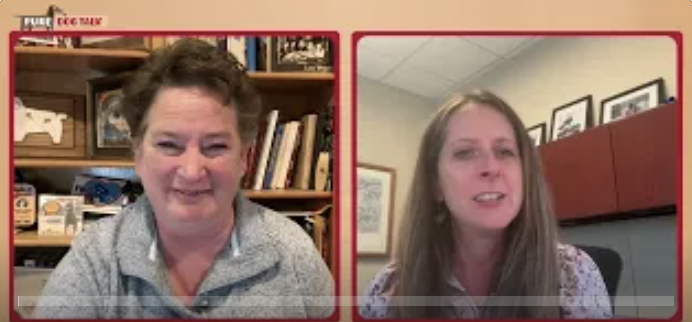 Stephanie Montgomery, CEO of the AKC Canine Health Foundation, joins host Laura Reeves to catch up on what the powerful non-profit has done and continues to do for all dogs.
Stephanie Montgomery, CEO of the AKC Canine Health Foundation, joins host Laura Reeves to catch up on what the powerful non-profit has done and continues to do for all dogs.
Montgomery, an Airedale fancier, joined CHF as the CEO in 2023, but “I was able to kind of blend my passion for science and dogs and started volunteering for the Canine Health Foundation as a scientific reviewer. And then I always say I’m a failed volunteer because now I’m working here.
“We are celebrating our 30th year anniversary this year, founded in 1995. And what I was so impressed by was that folks had this vision. So what we do is we fundraise, right? And we distribute that money. To fund the best research that will advance the health of all dogs. So we do that through awarding grants to researchers that tend to be at veterinary schools. And when we evaluate those grants, we wanna find the most cutting-edge research that’s going to have the biggest impact on dogs, and that’s what we’ve done for 30 years.
Canine Health Foundation helped fund the work conducted at Fred Hutchinson Cancer Center that identified the canine genome. This is the basis for all ensuing DNA testing since 2004.
“Prior to 1995 when CHF started, there was no dog genome,” Montgomery said. “The human genome had only been completed two years prior and it was pivotal. It changed the way that we could look at genetic testing and evolution of dogs and develop tools in veterinary medicine.
CHF’s contribution to ground breaking science continues to this day with research at hundreds of Universities, including studies into mitral valve disease that impacts millions of dogs.
“I’m so happy to see the work being done because mitral valve disease is so common in all of the dogs,” Montgomery noted. “I’m a pathologist and the number of older dogs that don’t have some mitral valve disease is really next to none. They all have it and we understand so little about it, even though it’s so common. And so I’m so excited that we have new studies going that help us understand the physiology of how this disease develops. It will help us identify targets for future therapies. We also have studies on how to best diagnose and monitor progression so maybe we can make a difference and impact all these dogs that have mitral valve disease.”
679 – Black Russian Terrier: “The Black Pearl of Russia”
Black Russian Terrier: “The Black Pearl of Russia”
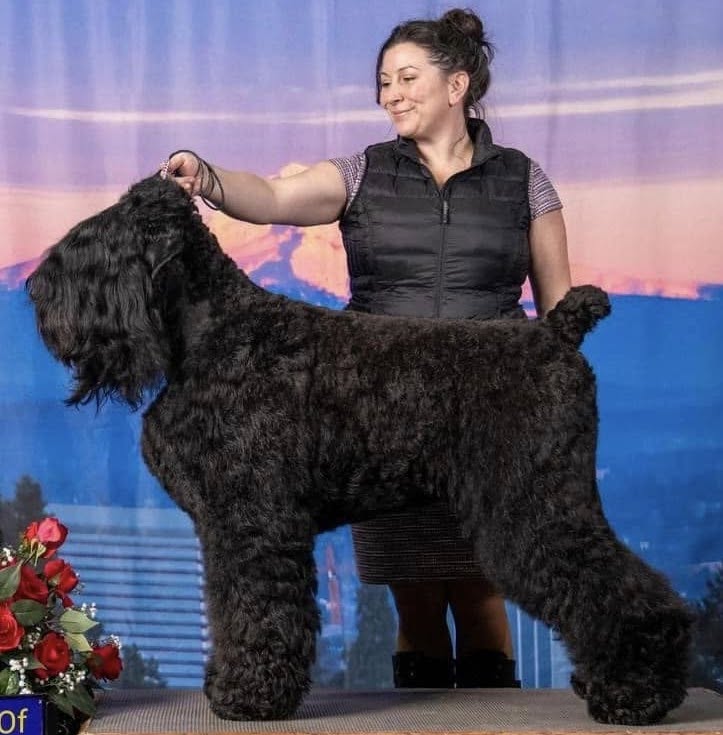
Emily Fagan showing one of her Black Russian Terriers.
Host Laura Reeves is joined by Emily Fagan, breeder of Black Russian Terriers, for a Love the Breeds episode talking about the “big black fluffy bearded beasts” that have become her “spirit animal.”
“Like they are the Black Pearl of Russia and they really are like the hidden gem. Most people, they see them and they’re like, ohh, boy, that’s kind of this big black scary kind of looking dog. And they’re so stoic and regal in public and then they come home and they’re absolute goofballs, complete clowns,” Fagan said.
“A short background history that Stalin basically was jealous of the Germans, you know, and their wonderful police military dogs. So he’s like, you know what, I’m gonna make a superior breed of dog for military and police work. He got a bunch of scientists, geneticists together and actually started developing the Black Russian Terrier. The four main contributors are the Rottweiler, the giant Schnauzer, the Newfoundland and the Airedale Terrier. So there’s the terrier. But they are very much NOT a terrier.”
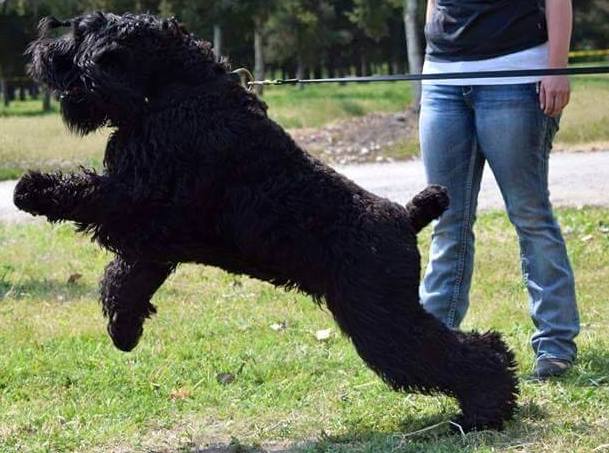
Black Russian Terrier training for “bite work” competition.
The breed was utilized by the KGB, and still is today by its successor agency, the FSB, as well as being used in the Russian prison system. It’s job, Fagan said, was to terrify people. And they’re very good at their job.
The best owners of BRTs are not first-time dog owners, Fagan said. She added that structure and very defined rules are critical.
“You do need to be fair because they are very smart,” Fagan noted. “This is not an old school, put the dog on its back. You can’t do that. Absolutely not. You would ruin your relationship with this breed because it’s built on trust too. You have to build respect. So a person who understands a structured environment is really going to thrive.”
678 – Resurrecting a Legendary Product
Resurrecting a Legendary Product
Tasha Mesina, new owner of Cindra, joins host Laura Reeves to discuss resurrecting a legendary grooming product.
“I had used the brand Cindra since the beginning of time on the Belgians and I loved it,” Mesina said. “Unfortunately, Cindra closed with COVID like many things did, supply chain issues, blah, blah, you know the story that everybody has. And I missed it. I really missed it.
“And I maybe didn’t realize they had closed for a hot minute until I tried to find Super Coat and then it was like why am I going on eBay to find super Coat? And so I kind of followed the chain, and found out that the company was for sale.
“It was kind of a little bit of a process to buy it, but unfortunately with them closing (during) COVID, it made it affordable for me. I couldn’t afford it before so and then closing a grooming shop, selling a property in California, it just kind of all came together at one moment.
“The Phillips started the company. Cindy Phillips was the gal and actually I got to talk to her. I actually bought the company from her son, Seth They have been absolutely fantastic to help me transition. I literally have every document that Cindra ever produced in the history of time, which is really cool. It was a lot, but it was neat to see, you know how the company got started. I mean, they had testimonials from the 80s, you know?
“It was the family owned company. It was the mom, dad and a son that took it over when they retired. Fantastic people. I mean, they’re just great. Still to this day, if I have a question, I pick up the phone, they instantly have an answer. I mean, he really, I feel, wants this to succeed because it was their baby for so many years.
“I was a dog groomer. I’m a dog breeder. Like, I didn’t understand the nuts and bolts of running a shampoo company. So it’s kind of been a huge, huge learning curve for me to understand how all of it works. People can find it at distributors, they can order it directly.
677 – Overcoming Obstacles by Giving Grace
Overcoming Obstacles by Giving Grace

Rebecca Fletcher with her Dogo Argentino.
Rebecca Fletcher joins host Laura Reeves to talk about her journey as a service dog trainer and breeder owner handler of Dogo Argentino, while overcoming extreme obstacles after losing her leg.
Fletcher, a retired Marine, started her journey by training her own Dogo Argentino as her first service dog.
“Don’t give up, but give yourself grace,” Fletcher said. “Grace is absolutely vital. And I wasn’t very good at it. I get mad myself. You know, I train service dogs for disabled people and I tell them all the time, you know, you gotta be patient with yourself. And I give them some great advice. I’m not always good at taking my own advice.
“I got my first Group One under Doctor Keating. And it meant so much to me because I was on the verge of not willing to do this anymore. I don’t know if he’ll ever know how much it meant to me to actually be in his ring and have a dog that I love so much be awarded. But it was amazing.
“I didn’t know anybody in the dog show world really. And it was a process, but a lot of people were very, very welcoming and guiding me. It’s been a great learning process of figuring out how I can be in the ring with my disability. And again, advocating for yourself, you know, the AKC is not exempt from providing reasonable accommodations to us.
“I hope to continue inspiring people to get out there and try and do whatever they can do. My goal is to help inspire other people to overcome their challenges and keep going.
“We all have challenges and how we face those challenges I think is what makes all the difference.”


